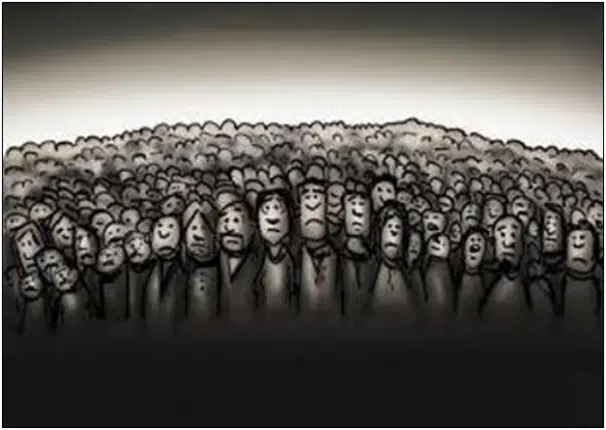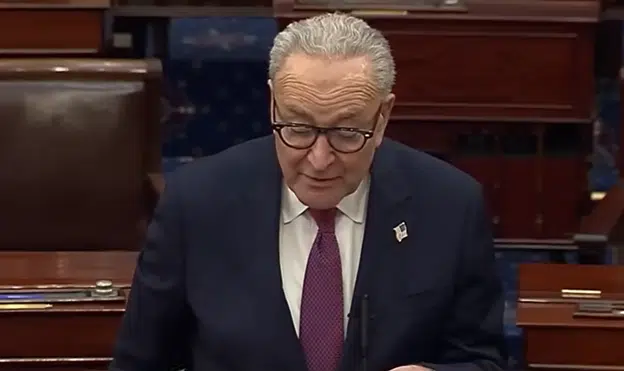 By David Nace — We think of the 9 robed Justices of the Supreme Court as beyond intimidation. However, we now know this is false. The bizarre decision of Chief Justice Roberts to uphold Obamacare by making it Obamatax is not the first time that a Supreme court Justice has succumbed to intimidation and voted to usurp the Constitution, believing it was necessary to preserve either the Supreme Court or their own personal legacy.
By David Nace — We think of the 9 robed Justices of the Supreme Court as beyond intimidation. However, we now know this is false. The bizarre decision of Chief Justice Roberts to uphold Obamacare by making it Obamatax is not the first time that a Supreme court Justice has succumbed to intimidation and voted to usurp the Constitution, believing it was necessary to preserve either the Supreme Court or their own personal legacy.
The 1930’s were a dreadful time for the Constitution. Since the election of Woodrow Wilson and the passage of the 16th Amendment, progressives had challenged the limits of federal power and scope imposed by the Constitution at every opportunity. However, the election of FDR in 1932 was a direct threat to the limited government envisioned by the Founding Fathers and embodied in the Constitution. During FDR’s first 100 days of progressive arrogance, he took many of Herbert Hoover’s voluntary policies to fight the recession and made them mandatory by both executive order and legislation. Two of the most significant pieces of what became known as the New Deal were the National Industrial Recovery Act and the Agricultural Adjustment Act. Like the 2009 Stimulus Act, these were huge economic paybacks to groups that supported progressives and FDR.
The National Industrial Recovery Act (NIRA) gave the President authority to organize industrial cartels to prevent products from being sold too cheaply. It provided unions with bargaining rights they never had before and also established a Public Works Authority. Companies that followed the NIRA price codes got to hang a blue eagle in their window, while those that did not were ultimately prosecuted and fined. This bill effectively ended free enterprise in many industries and imposed Mussolini style fascism across America.
The other powerful and equally damaging bill was the Agricultural Adjustment Act (AAA). Farmers had been plagued by low commodity prices for two decades as mechanization allowed them to plant more acreage and the introduction of the tractor reduced the cropland required to feed draft animals. This bill kept commodity prices high by paying farmers to destroy crops and livestock at a time when millions were out of work and hungry.
The expansion of federal power by these bills eventually found its way to the Supreme Court. Unlike today, in the 1930’s public opinion was in favor of progressive power expansion. The Supreme Court was the last vestige of resistance to government intervention into the economy on behalf of politically powerful groups. The Court was divided between four conservative justices defending the Constitution, three liberal justices voting to expand the powers of government regardless of the Constitution, and two swing justices, Hughs and Roberts. Roberts generally voted with the four conservative justices, known as the Four Horseman.
Prior to the 1936 election, FDR had suffered major setbacks to his expansion of the Federal government and his personal power. The Supreme Court had ruled both the NIRA and the AAA unconstitutional. After a landslide reelection in 1936, FDR was determined to end the power of the Four Horseman to interfere with his progressive visions of an all powerful Federal government. He proposed a plan to supplement the justices over 70 with younger justices that he would appoint. His court packing plan raised the ire of even the Democratic majorities in the House and Senate and was highly unpopular with the public. FDR had finally gone too far in interfering with the Supreme Court.
While FDR was proposing his court packing scheme, the Supreme Court was deciding yet another piece of New Deal legislation. In the West Coast Hotel vs. Parrish case, Justice Owen J. Roberts, who had previously voted with the Four Horseman, suddenly voted with the liberal justices. This vote was seen as Robert’s way to protect the Supreme Court against FDR’s court packing scheme, although Chief Justice Hughs claimed that it was FDR’s landslide reelection that allowed Hughs to convince Roberts to side with the liberal justices in this case. In reality, FDR’s executive branch over reach was so unpopular with his own party and the public that it lacked the votes for passage.
Ironically, it was not necessary for FDR to pack the Supreme Court. When conservative Justice, Van Devanter retired, FDR was able to appoint former Ku Klux Klan member, Hugo Black, to the Court, effectively ending constitutional conservative dominance on the Supreme Court for almost 50 years. During his four terms, FDR appointed a total of eight Justices to the Supreme Court.
Just as Justice Roberts of the 1930’s was willing to sacrifice constitutional principles in a misguided effort to preserve the legacy of the Supreme Court, today’s Justice Roberts was willing to sacrifice the Constitution in a misguided effort to preserve the perception of the Court and his own legacy as Chief Justice.
With all due respect to Eric Erickson, Charles Krauthammer and others, I really don’t think Justice Roberts was playing chess in making his decision. As intelligent as Justice Roberts is, I believe his motives are much simpler, a misguided attempt to preserve his own legacy and the legacy of the Supreme Court under his leadership. Perhaps, he actually believes that New York Times and the Washington Post editorials about conservative Justices and conservatives in general. Or more importantly, he actually took the public berating of the Supreme Court by President Obama personally. In one week, he has gone from just another conservative rube to an esteemed and scholarly justice in the liberal press.
However, Justice Roberts did not have to shred the Constitution and rewrite the law to rise above partisan politics. The first argument made by Solicitor General, Donald Verrilli, was that the case could be decided now because the individual mandate was a mandate not a tax. Had it been a tax, the Anti-injunction Act would ban hearing the case until after the tax has been paid. In the second phase of oral arguments, Verrilli argued whether the law fell within the Commerce Clause, Necessary and Proper Clause or Taxing Powers of the Congress. The following days arguments were on the legitimacy of Medicard expansion and the severability of the law if the individual mandate was found unconstitutional.
Justice Roberts’ interpretation that imposing a tax on someone not purchasing healthcare coverage is allowable under the Constitution is probably correct since the passage of the 16th amendment allows the Federal government to tax far beyond the original intentions of the Founding Fathers and the Constitution. However, if Justice Roberts was interested in preserving the integrity of the Supreme Court rather than just preserving his own legacy and obtaining the editorial praise of the Washington Post and New York Times, he could have struck down the entire law as unconstitutional because the President and Democratic Congress obtained passage of the bill by incorrectly presenting a tax allowed by the Constitution as a mandate prohibited by the Constitution. The proponents of the bill would be given an opportunity to rightfully reintroduce the bill including an individual tax for not purchasing healthcare coverage.
It is absolutely unthinkable that Justice Roberts would determine that the individual mandate was a tax then vote to uphold the bill when the very first argument that the government needed to make was that the individual mandate was not a tax so that the Anti-Injunction Act would not apply.
It is hard to imagine that a man of Roberts’ abilities would succumb to President Obama’s blatantly false statement that the Court should not overturn a passed law. The role of the Supreme Court since Marbury vs. Madison is to determine if laws passed by the Congress and the President are in accordance with the Constitution. Perhaps Justice Roberts really did believe that his legacy would rest on the false narrative from the left that a decision supporting the Constitution is partisan while a decision against the Constitution is scholarly jurisprudence. However, the majority of the America public doesn’t believe that and it is they, not the liberal press that will ultimately judge Justice Roberts’ leadership and integrity.
David Nace, an Executive Vice President of a Pennsylvania construction and engineering company, is a Liberty Features Syndicated writer.






